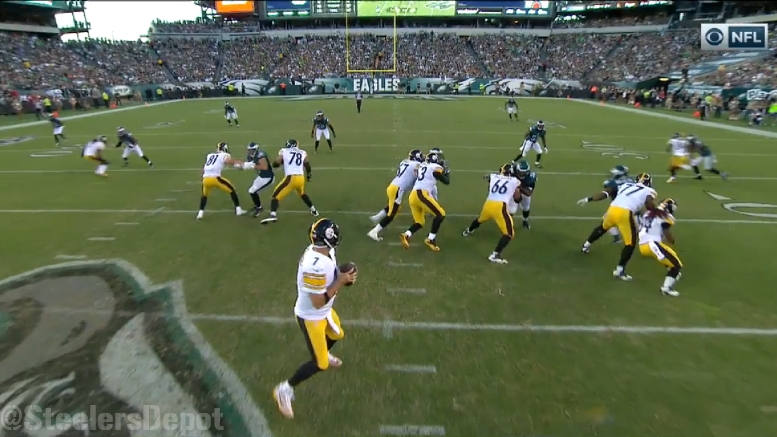One of the most concerning factors in the Pittsburgh Steelers’ loss to the Eagles on Sunday, to me, was the fact that, outside of one drive, they continued to do a good job of staying ahead of the game in the field position battle, and yet they were still ineffective of managing to stay ahead of the curve, as Philadelphia was able to flip the field right back on them.
The Eagles’ average starting field position during the game on their 10 drives on Sunday was their own 27.1-yard line, which was the worst of the free games that the Steelers have allowed thus far. But that number is skewed heavily by one outlier, when Philadelphia started on drive on Pittsburgh’s 41-yard line following a fumble.
Outside of that one drive, the Eagles’ average starting field position was actually just the 23.6-yard line, which is almost a yard and a half worse than if they had simply just recorded a touchback to begin every drive. Even if you only consider the five drives on which they scored when they began inside their own territory, they still had an average starting field position of just the 25-yard line.
Obviously, this field position was due primarily to the work of the Steelers’ punt team and punter Jordan Berry, given that they only kicked the ball off twice, since they scored just one time, and obviously were obligated to kick the ball off to start the second half.
When the Steelers did punt, the Eagles began the subsequent drives on their own 18, 20, and 20, respectively. They had drives end with a blocked field goal, at the end of the half, at the end of the game, and on downs twice, in addition.
The Steelers’ own average starting field position was actually quite poor, as they started their 11 drives, on average, at their own 22.5-yard line. On only one occasion throughout the entire game did they begin a drive outside of their own 25-yard line.
In all, outside of just one sole possession throughout the game, at which point the Eagles had already surmounted a 24-point lead, neither the Eagles nor the Steelers had much luck, much less an edge, with respect to the field position battle, and that leaves room for just one conclusion.
Quite simply, Philadelphia did a significantly better job of keeping drives alive and staying the course down the field, and obviously ultimately putting the ball into scoring position, than did the Steelers, time and time again, until the hole for Pittsburgh was too deep to climb out of.
Field position was not a significant contributor in aiding the Eagles’ ability to score, but it was a significant inhibitor for the Steelers’ offense, which only mustered three of 11 drives that traversed at least 40 yards. One drive ended in a made field goal, another a missed, and the third resulted in a turnover on downs. The Eagles ran six drives in which they matriculated the ball down the field at least 40 yards, and they scored on all six occasions.








